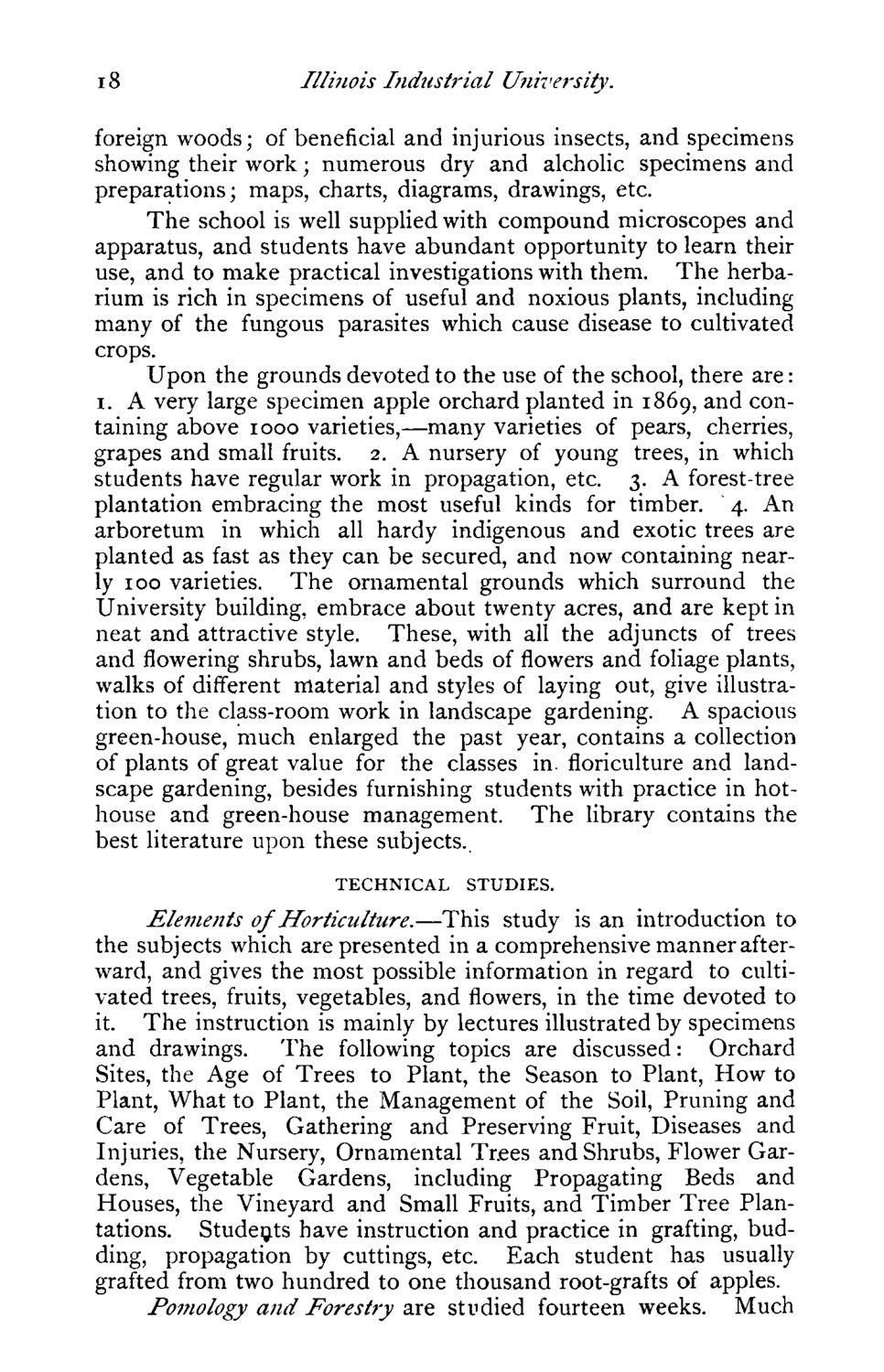| |
| |
Caption: Course Catalog - 1877-1878 Version B
This is a reduced-resolution page image for fast online browsing.

EXTRACTED TEXT FROM PAGE:
18 Illinois Industrial University. foreign woods; of beneficial and injurious insects, and specimens showing their work; numerous dry and alcholic specimens and preparations; maps, charts, diagrams, drawings, etc. The school is well supplied with compound microscopes and apparatus, and students have abundant opportunity to learn their use, and to make practical investigations with them. The herbarium is rich in specimens of useful and noxious plants, including many of the fungous parasites which cause disease to cultivated crops. Upon the grounds devoted to the use of the school, there are: i. A very large specimen apple orchard planted in 1869, and containing above 1000 varieties,—many varieties of pears, cherries, grapes and small fruits. 2. A nursery of young trees, in which students have regular work in propagation, etc. 3. A forest-tree plantation embracing the most useful kinds for timber. 4. An arboretum in which all hardy indigenous and exotic trees are planted as fast as they can be secured, and now containing nearly 100 varieties. The ornamental grounds which surround the University building, embrace about twenty acres, and are kept in neat and attractive style. These, with all the adjuncts of trees and flowering shrubs, lawn and beds of flowers and foliage plants, walks of different material and styles of laying out, give illustration to the class-room work in landscape gardening. A spacious green-house, much enlarged the past year, contains a collection of plants of great value for the classes in. floriculture and landscape gardening, besides furnishing students with practice in hothouse and green-house management. The library contains the best literature upon these subjects. TECHNICAL STUDIES. Elements of Horticulture.—This study is an introduction to the subjects which are presented in a comprehensive manner afterward, and gives the most possible information in regard to cultivated trees, fruits, vegetables, and flowers, in the time devoted to it. The instruction is mainly by lectures illustrated by specimens and drawings. The following topics are discussed: Orchard Sites, the Age of Trees to Plant, the Season to Plant, How to Plant, What to Plant, the Management of the Soil, Pruning and Care of Trees, Gathering and Preserving Fruit, Diseases and Injuries, the Nursery, Ornamental Trees and Shrubs, Flower Gardens, Vegetable Gardens, including Propagating Beds and Houses, the Vineyard and Small Fruits, and Timber Tree Plantations. Students have instruction and practice in grafting, budding, propagation by cuttings, etc. Each student has usually grafted from two hundred to one thousand root-grafts of apples. Pomology and Forestry are studied fourteen weeks. Much
| |